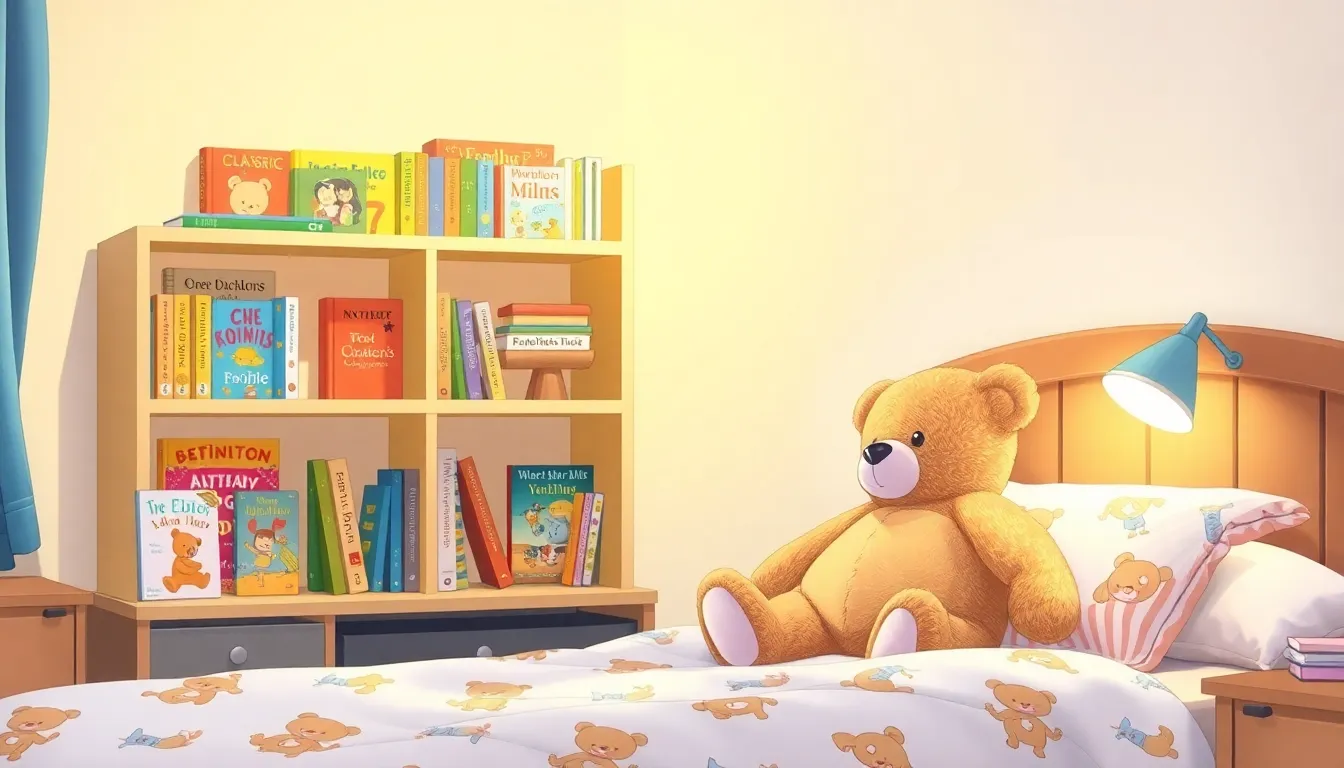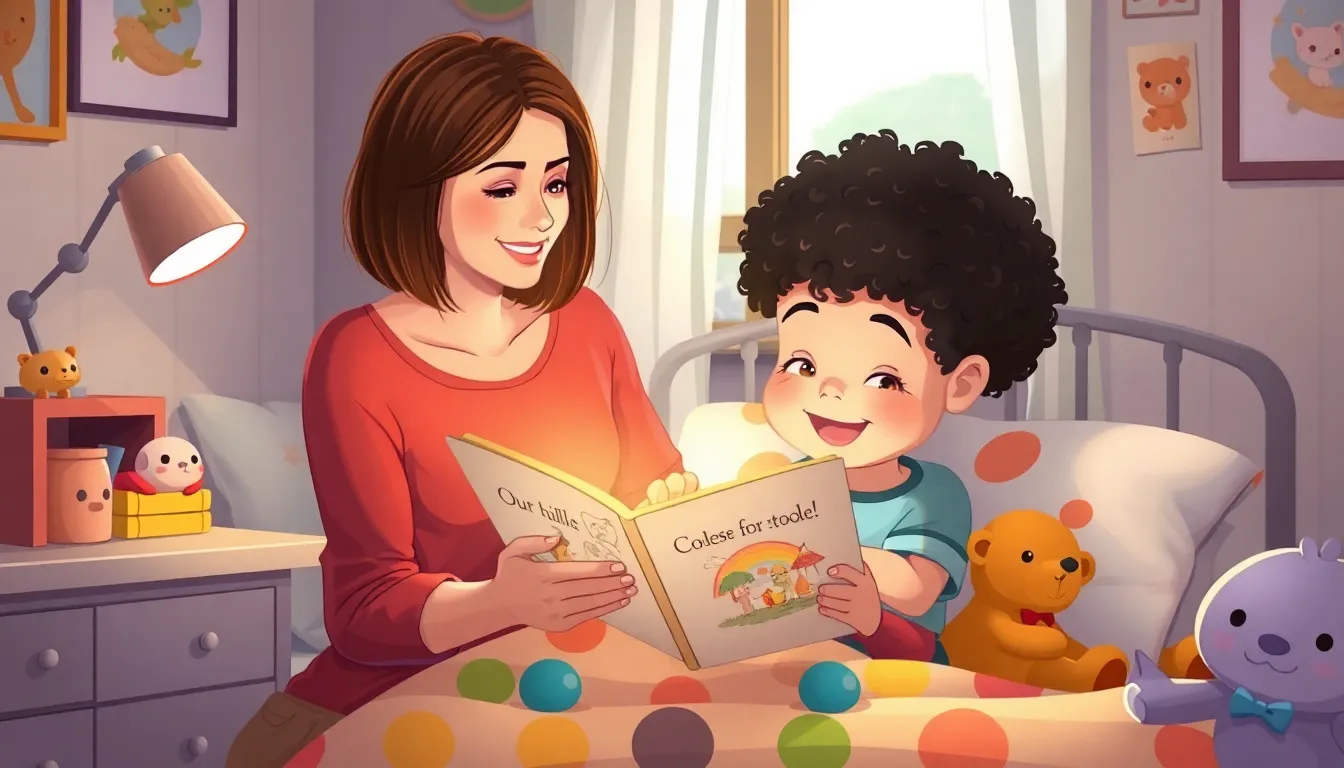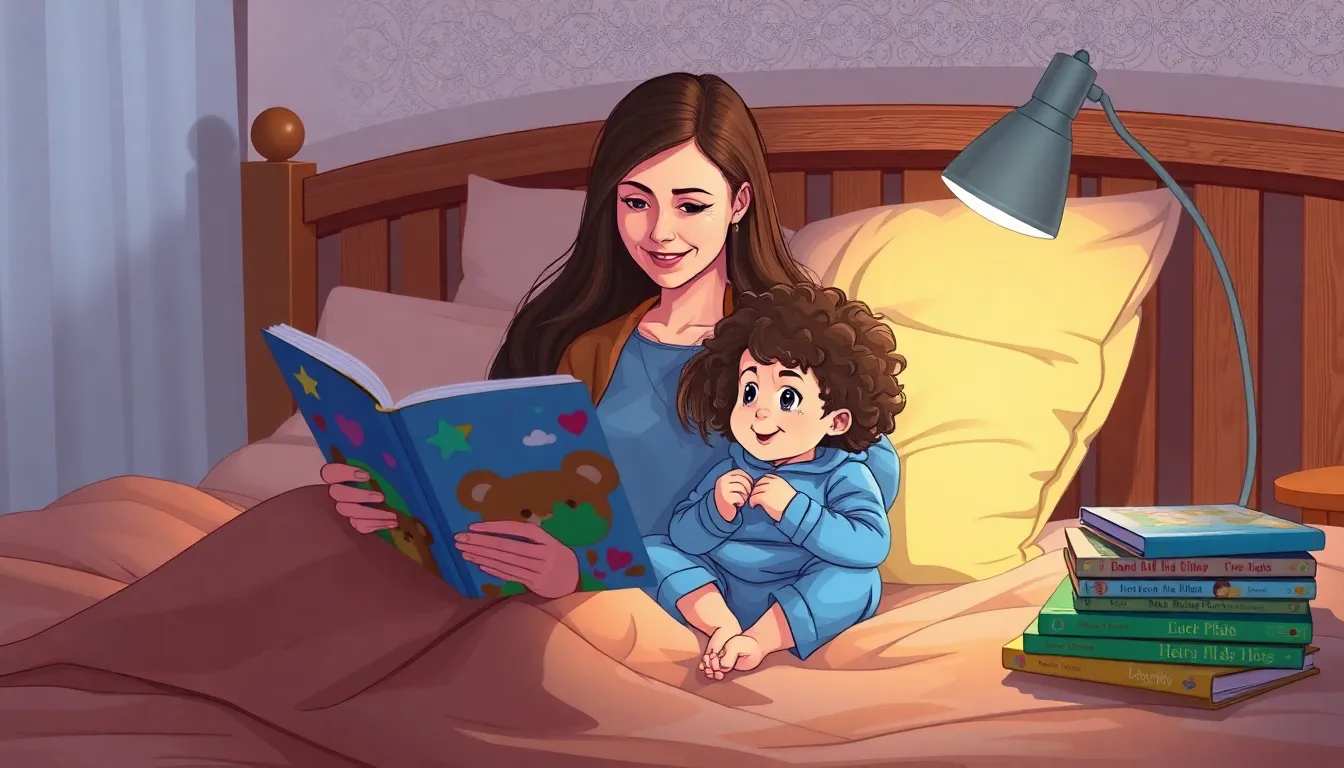Every parent knows the nightly battle of getting toddlers to sleep. It’s like trying to negotiate with a tiny, caffeine-fueled dictator. But what if there was a secret weapon? Enter toddler bedtime stories. These magical tales not only whisk little ones away to dreamland but also spark their imagination and strengthen the parent-child bond.
Table of Contents
ToggleImportance Of Toddler Bedtime Stories
Toddler bedtime stories are essential tools that foster growth and bonding. They provide a dual purpose: calming children before sleep and stimulating their minds.
Benefits For Cognitive Development
Reading bedtime stories significantly boosts cognitive development. Exposure to diverse vocabulary enhances language skills. Narratives encourage critical thinking, as children learn to process information and predict outcomes. Imaginative tales spark creativity, introducing toddlers to new concepts and experiences. Engaging stories also aid memory retention, promoting recall as children listen to familiar plots and characters.
Establishing Routines And Comfort
Bedtime stories establish a comforting routine. Predictable story time helps toddlers signal their brains for sleep. Consistency reduces anxiety, creating a safe space for relaxation. Comfort comes from hearing a loved one’s voice, fostering emotional security. Stories offer a transition from daytime activities to night, reinforcing a sense of order and predictability in a child’s world.
Types Of Toddler Bedtime Stories


Toddler bedtime stories come in various styles, each offering unique benefits for children. Parents can explore different types to find the perfect fit for their nightly routine.
Classic Bedtime Tales
Classic bedtime tales feature timeless themes and familiar characters. These stories often include fairy tales like “Little Red Riding Hood” and “Goldilocks and the Three Bears.” Parents appreciate the lessons embedded in these narratives, which teach morals and values. Favorites like “The Three Little Pigs” promote teamwork, while tales such as “The Velveteen Rabbit” celebrate love and friendship. Reading these famous stories instills a sense of tradition, creating a comforting atmosphere perfect for sleep.
Modern Storybooks
Modern storybooks introduce fresh characters and relatable situations. These books often reflect diverse cultures and contemporary themes. Titles like “Goodnight Moon” and “The Pout-Pout Fish” engage toddlers with playful language and vivid illustrations. Creative plots and engaging rhythms captivate children’s minds, making them eager to participate. Many modern stories focus on emotions, friendships, or everyday adventures, helping children understand their feelings in a safe context. Parents often choose these stories for their educational value and ability to spark conversations.
Tips For Choosing The Right Story
Selecting the right bedtime story plays a crucial role in creating a soothing nighttime routine. Focus on a few key aspects to enhance the experience.
Age-Appropriate Content
Choose stories that cater to a toddler’s developmental stage. Books suitable for ages one to three typically use simple language and relatable themes. They introduce basic concepts like numbers, colors, and emotions. Recognizing age-appropriate narratives helps maintain interest and understanding. Selecting characters that toddlers can relate to fosters engagement, making the experience enjoyable. Opt for stories that evoke curiosity, ensuring that they capture a toddler’s attention without overwhelming them.
Engaging Illustrations
Visual appeal significantly influences a toddler’s engagement with bedtime stories. Bright colors and captivating illustrations can hold a child’s interest throughout the story. Illustrations that enhance the narrative encourage toddlers to immerse themselves in the tale. Characters with expressive faces convey emotions, aiding toddlers in relating to the feelings being portrayed. Selecting books with interactive elements, such as flaps or textures, fosters a hands-on experience, making storytime even more enjoyable for both parent and child. Engaging visuals stimulate imagination, paving the way for meaningful discussions and bonding moments.
Creating A Bedtime Story Routine
Establishing a bedtime story routine can foster a sense of comfort and security for toddlers. Consistency plays a key role in creating anticipation and making storytime a cherished part of each night.
Setting The Scene
Creating a cozy environment enhances the bedtime story experience. Lighting soft lamps or using nightlights helps create a calming atmosphere. Plush blankets or favorite stuffed animals make the space inviting. Selecting a quiet room minimizes distractions, allowing toddlers to focus on the story. A relaxed setting encourages little ones to unwind, preparing them for sleep. Storytelling becomes a bonding activity when parents share the space and settle in nearby.
Incorporating Interactive Elements
Interactive elements in bedtime stories keep toddlers engaged and promote active participation. Choosing books with flaps, textures, or sounds captivates their attention. Questions throughout the story encourage toddlers to express their thoughts and feelings. Parents can use different voices for characters, turning storytelling into a lively performance. Encouraging toddlers to predict what happens next fosters critical thinking. This interaction strengthens the parent-child bond, making each storytime special and memorable.




